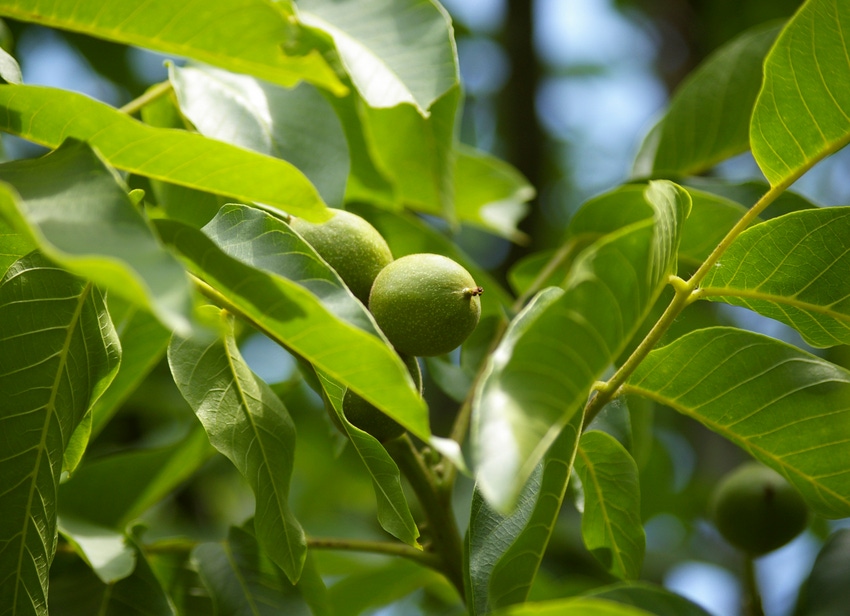
The emergence of a tiny bark beetle and its association with a fatal walnut tree disease would normally be a concern for the California walnut industry, except that researchers have not yet found the pest that caused significant adverse effects to walnut trees during a three-year trial.
Steven Seybold of the USDA Forest Service Research Station says studies at the Nickels Soil Lab, funded by the California Walnut Board, were designed to determine the impact of walnut twig beetle (WTB) on the health, productivity, and management of English walnut.
WTB vectors a fungus, Geosmithia morbida, which causes thousand cankers disease. Affected walnut trees undergo crown die back and eventually die.
In Seybold’s trial, Chandler walnut trees were baited with an aggregation pheromone for walnut twig beetle to invite an attack. Traps were also used in the trees to determine population and flight activity. In the first year of the trial, the population and colonization density of WTB was low in treated trees.
Over the next two years, Seybold reported a significant increase in the number of WTB entrance holes on the scions of pheromone-baited trees, but no impact to the trees was noted. He says the next part of the research project will include orchards with higher levels of disease and whether other stressors present in an orchard can lead to higher WTB populations.
Tree size, the incidence of thousand cankers disease, tree crown condition, and walnut quality and productivity were all noted prior to the trial. Seybold says the test trees included crown gall infections. The long-term plan, he says, is to continue assessing the pre-treatment variables for three growing seasons.
WTB - smaller in size than a single grain of rice - is a native of the western U.S. and was not considered a serious pest of walnut until it became associated with thousand cankers disease. The phloem-boring insect colonizes larger branches and trunks of all species of walnut, punching pinhead-size holes into the tree.
The fungus that causes thousand cankers disease enters the tree through the holes and impacts the phloem and cambium, effectively strangling the tree. As the fungus spreads, large numbers of small cankers develop on impacted branches.
Thousand cankers disease was found in California in 2008 near Davis and has been confirmed in Los Angeles County, and as far north as Sutter County. It’s been found in eight other western states.
Early symptoms include yellow foliage. The fungus causes distinctive circular- to oblong-shaped cankers under the bark. Infested trees can die within three years of initial symptoms.
At the annual Nickels Soil Lab field day, Seybold said another ongoing project involves the development of a WTB repellant that growers could use to protect trees from infestation. He has been testing the WTB reaction to a number of compounds.
“We’re looking at materials that would make an orchard not smell like walnuts, and keep WTB moving out of the orchard,” Seybold said.
This management option could be easily applied or used in release devices.
Working with Tulare County Cooperative Extension Farm Advisor Elizabeth Fichtner, Seybold says WTB research includes the potential for firewood piles and basal galls from crown gall-infected trees as sources for WTB and TCD.
He says the trial looked at WTB emergence from walnut firewood in response to temperature, enabling an accurate prediction of emergence.
English walnut orchards may reduce the risk of TCD introduction to un-infested or lightly infested areas.
About the Author(s)
You May Also Like




